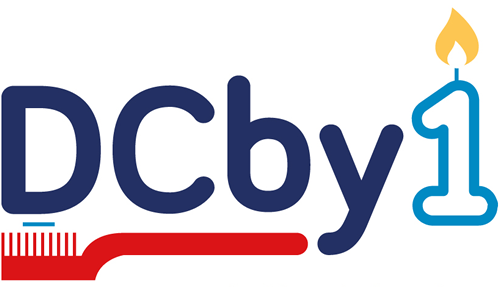The impact of Dental Check by One

A paper (1) published in the most recent issue of Community Dental Health serves as an important baseline for dental attendance in children under one year of age. The paper is based on data analysis carried out by a team at the University of Birmingham between 2016 and 2017 and showed that the rate of attendance in babies less than one ranged from 0-12.3% while in children aged under two, it ranged from 3.7 to 37.6%.
The Dental Check by One campaign (DCby1) was launched to the dental profession in May 2017 just as the data analysis for this important piece of research was concluding.
Two years on from the professional launch of DCby1 in June 2017 we are happy to confirm that there has already been a small improvement with 2.5% more children aged 0-2 accessing a dentist in the year ending December 2018 (compared to December 2016).
Significantly, many dental practices and local authorities have got on board with the campaign. They have done so by reaching out to families through activities like face-painting, photo-booths and children’s entertainers or engaging with local schools and nurseries. As Smile Month got underway in 2019, we witnessed impressive initiatives around the country to get young children into dental practices – such as the hashtag campaign #ALittleTripToTheDentist.
We are seeing joined-up action with many healthcare organisations as well as pharmacies, nurseries and schools getting on board with improving children’s oral health, doing what they can with limited resources.
Claire Stevens, spokesperson for BSPD, commented: “So much good work is happening and there are dental practices and corporate chains leading the way. Let us all learn from them. We know the number of young children aged 0-5 seeing a dentist must improve – this is work in progress.”
The Birmingham paper compared dental attendance in different parts of the UK. The team reported that more deprived areas were unexpectedly more likely to report higher dental access rates. Interestingly, a letter to the BDJ (2) from former BSPD President Robin Mills highlighted last year that there appeared to be a North South divide in dental attendance.
Claire added: “We hope that this signifies that the initiative may be reaching those who most need early access and thereby addresses social inequalities. It’s welcome news that the young children who most need to see a dentist appear to have a better chance of doing so.”
References
- Salomon-Ibarra C. C. et al. (2019) Low rates of dental attendance by the age of one and inequality between local government administrative areas in England. Available online. Community Dental Health. 36 22-26 (Accessed May 2019) doi: 10.1922/CDH_4390Salomon-Ibarra05
- Mills R. 2018 BDJ Letters. Available online. (Accessed May 2019)

